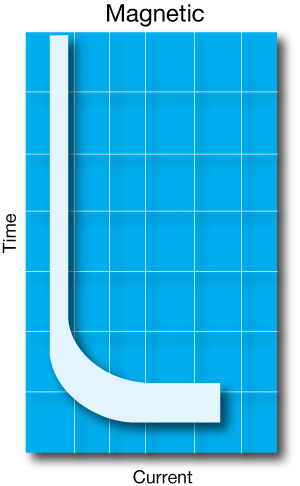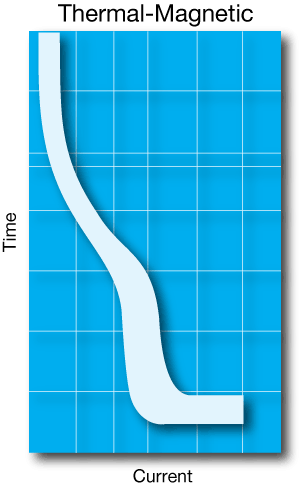

12 Most Common Mistakes When Specifying Circuit Protection For Equipment
As a leading manufacturer of circuit breakers for more than 50 years, E-T-A has helped countless engineers navigate the specification process. Though this experience, we have encountered many misconceptions, and we have selected the 12 most common pitfalls for this white paper. It is our hope that, by sharing our expertise, you will avoid these mistakes and protect your designs with "just right" circuit protection.
1. Specifying the wrong circuit breaker type for the application
The number one mistake made is specifying the wrong circuit breaker technology for the application. There are four choices of circuit breaker technology: thermal, magnetic, thermal-magnetic and high performance. Each has a different trip profile in relation to time and current, and each has distinct mechanical characteristics.



Magnetic Circuit Breakers
Magnetic circuit breakers operate via a solenoid, and trip nearly instantly as soon as the threshold current has been reached. This type is appropriate for printed circuit board applications and impulse disconnection in control applications. Often, a magnetic circuit breaker is combined with a hydraulic delay to make it tolerant of current surges. Preferably, the circuit breaker is mounted in a horizontal position to prevent gravity from influencing the movement of the solenoid. If mounted in a non-horizontal position, derating may be needed.
Thermal Circuit Breakers
Thermal circuit breakers incorporate a heat-responsive bimetal strip or disk. This type has a slower characteristic curve that discriminates between safe temporary suarges and prolonged overloads. It is appropriate for machinery or vehicles where high current in-rushes accompany the start of electric motors, transformers and solenoids.
Thermal-Magentic Circuit Breakers
Thermal-magnetic circuit breakers combine the benefits of a thermal and magnetic circuit breaker: a delay that avoids nuisance tripping caused by normal inrush current, and fast response at high currents. High overcurrents cause the solenoid to trigger the release mechanism rapidly, while the thermal mechanism responds to prolonged low value overloads. They have a characteristic two-step trip profile that provides fast short-circuit protection of expensive electrical systems while minimizing the risk of disrupted system operation.
High Performance Circuit Breakers
Where reliable operation under adverse conditions is required, high performance circuit breakers provide high interrupting capacity and excellent environmental specifications. Typically these circuit breakers are specifically designed for aerospace, defense and similar heavy-duty applications where extreme vibration, mechanical shock, and other conditions are present, and where circuit breaker performance is absolutely critical. For high performance applications, thermal circuit breakers have a compensating element that eliminates sensitivity to ambient temperature.
Many engineers seek specification assistance from the support desks of circuit breaker manufacturers. However, be wary of advice from manufacturers who make only one type of circuit breaker. E-T-A Circuit Breakers has expertise in all circuit breaker technologies, and its applications engineers will recommend the right type of circuit breaker, regardless of technology.
Want more information on E-T-A?



